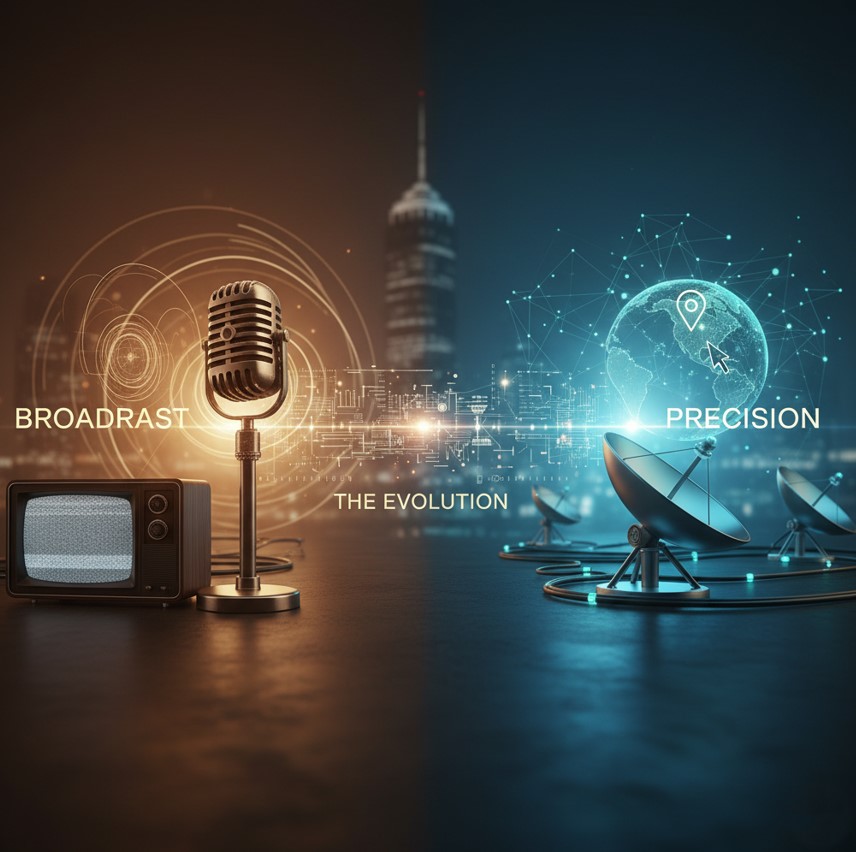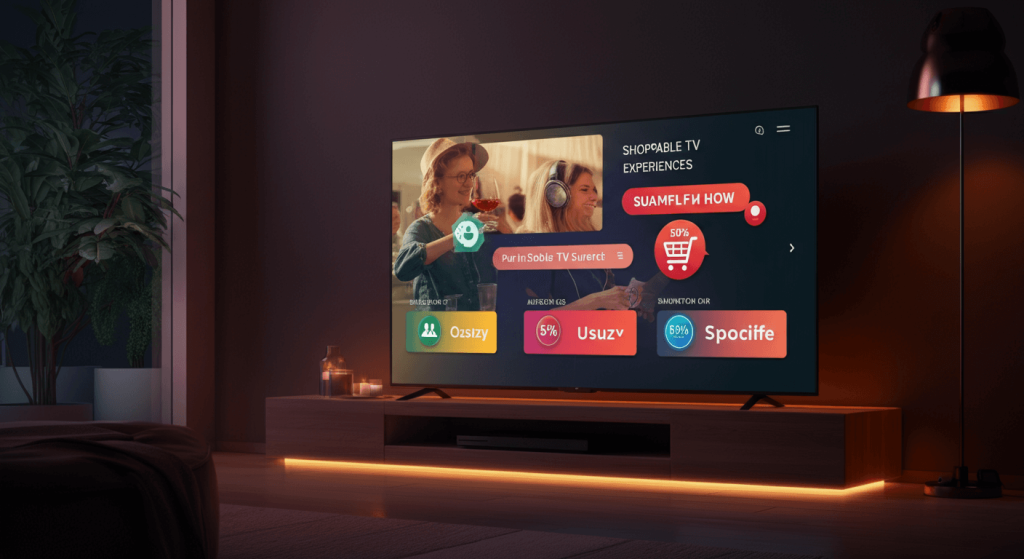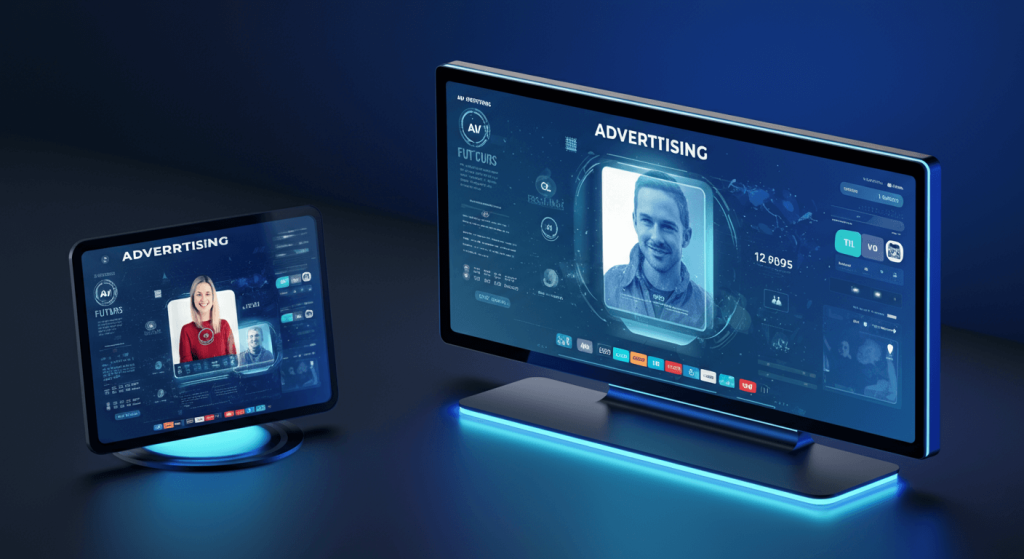The transformation of television advertising has been as striking as the transformation of everything else since the era of Mad Men and mass-market appeals. How brands connect with audiences, how success is measured, and how to develop connections with consumers on television have changed in a fundamental way with the digital revolution.
This guide covers how advances in tech have revolutionized TV advertising, from the targeting to the ways performance is measured. You will learn about the key developments driving this transformation and how today’s brands can utilize the evolution in this space to execute more measurable, accountable advertising campaigns.
Broadcast to Precision: The Evolution
It used to be that traditional television advertising was premised on a simple idea: you buy time on a network at the time your potential customers are likely to be watching and hope your message gets through. Advertisers bought big, broad demographics like “women 25-54,” with very little understanding of whether consumers were even watching their ad, let alone responding to it.
It made sense to take this approach when television was the dominant form of media consumption and there was very little else competing for people’s attention. Families huddled around shared television sets, producing predictable viewing patterns that marketers could target with a fair amount of confidence.
But in the digital age, those assumptions have been turned on their head. Today’s audiences watch content across screens, on a variety of devices, and at various times zones. They fast-forward through commercials, use ad-blocking software, and even flee to streaming services that provide an ad-free experience.

The Rise of Data-Driven Television
A fundamental shift has occurred from demographic-focused targeting to behavioral targeting because of technology. Sophisticated data analytics now let advertisers know not just the types of people who are watching TV, but how they watch, what they watch, and even when they are ready to take action.
From brand to direct, these data-driven tactics have turned television from a branding medium to a performance marketing channel that drives demonstrable business metrics. Learn more about Data-Driven Programmatic & Addressable TV Ads and how analytics optimize campaigns.
Programmatic Advertising Revolutionizes TV Buying
Programmatic advertising has automated the buying of television, replacing handshakes with algorithms. The innovation herein allows advertisers to buy commercial time on TV in real-time, creating business rules in and around audience data and campaign performance.
The revolution in how television advertising is bought and sold has democratized the medium, opening it to a wider range of smaller brands that did not have the budgets to run traditional television campaigns. By automatically adjusting bids on the fly, advertisers pay fair market value to reach their exact target audience.
Real-Time Optimization Capabilities
The explosion of connected TV and streaming services has produced fresh advertising options while splintering traditional audiences. Platforms like Netflix, Hulu, and Amazon Prime Video provide unprecedented targeting and interaction data.
Interactive TV enables direct consumer engagement. Sophisticated systems now allow viewers to click on ads to learn more, request samples, or buy products directly. Learn about Interactive TV Ads for Brand Engagement and how they create actionable consumer experiences.
Connected TV and Streamers Reshape How We Watch
The explosion of connected TV and streaming services has produced fresh advertising options but also splintered traditional audiences apart. The likes of Netflix, Hulu, Amazon Prime Video — all these platforms that are serving advertisers now, we have never had the level of targeting and interaction data that we’ve been getting from these, ever.
Connected TV advertising marries the impact of television with the precision targeting of digital advertising. Advertisers can target specific homes based on purchase history, device types, and viewing habits, delivering their message throughout the home on top-grossing broadcast-quality content.
Advanced Targeting Capabilities
Because streaming platforms hoard the granular data that traditional TV networks never held. This insight allows for advanced targeting tactics that cannot be achieved with traditional broadcast ads.
Advertisers can target viewers by what shows they’ve watched, genres they like, or even their completion rate for watching. This enables the ads to be shown in front of individuals who potentially would actually be interested in a similar product or service.
Artificial Intelligence Enhances Creative Development
Artificial intelligence has transformed the way advertisers make and improve TV ads. Thousands of winning ads are analyzed by machine learning algorithms to identify what works in engaging the user and converting them.
Tools powered by artificial intelligence can now create multiple creative variations, test them on focus groups, and predict which versions will perform best with which set of viewers. This development helps reduce the creative lead time and maximizes campaign success.
Dynamic Creative Optimization
High-level AI platforms automatically optimize the creative using live performance insights. If a message becomes resonant, the system can increase weight for emotionally evocative content in subsequent ad deliveries (i.e., viewers may respond favorably to content tugging at the heart strings instead of the head strings).
This ongoing optimization strategy also helps ensure that the creative is evolving over time to remain relevant and effective as campaigns progress.
Cross-Device Tracking and Unified Customer Journeys
Today’s media technology allows advertisers to follow customers across devices and platforms, building detailed pictures of consumer behavior. This cross-device tracking shows you the impact that television advertising has on online research, social media, and purchase decisions.
“It’s sort of insane to say I’m going to run a television commercial without knowing if anyone goes to my website as a result,” he said. This attribution model is evidence of television’s worth beyond conventional brand-metrics awareness.
Omnichannel Campaign Integration
We see cross-device tracking as the key enabler for advertisers to develop holistic campaigns for TV, digital, and mobile. A consumer may watch a TV commercial, investigate the product on their smartphone, and make the purchase on their laptop.
This omnichannel strategy provides uniform messaging across touchpoints, yet tailors each touchpoint in a way that best resonates. TV advertising is one dimension of an integrated approach, not a media buy.
Advanced Analytics Transform Measurement
Legacy TV measurement was based on small sample sizes and delayed reporting. Nielsen ratings gave demographic approximations days or weeks after the ads ran, so optimization was not possible.
Contemporary analytics systems provide real-time measurement, tracking things from view numbers to engagement rates. Advertisers can track the performance of a campaign on a day-to-day basis and tweak elements before ineffective ads have eaten away at the budget.
Granular Performance Metrics
State-of-the-art measurement technology now allows researchers to gain deeper insights into viewer behavior that were previously inaccessible to them. Advertisers can measure rates of attention, percentages of long-form ad completions, and even emotional response to creative.
This is the type of granular data that powers scientific methods of optimizing television advertising. Advertisers can discover what creative characteristics are driving results and apply learnings to succeed in future campaigns.
Interactive Television Enables Direct Response
Interactive TV has revolutionized viewing from passive experiences into actionable experiences that motivate immediate consumer involvement. Viewers can click on ads to learn more, request samples, or buy without taking off their TV slippers.
This interactivity has made television advertising a direct response channel like digital advertising. Ad buyers can determine the direct conversion of why someone is or is not buying something and track Perfect ROI for television sessions.
Shoppable TV Experiences
Sophisticated interactive systems now make it possible for people to buy products from a television commercial. QR codes, voice-activation, and remote control engagement provide frictionless shopping experiences while leveraging the emotional power of the TV medium.
These shoppable experiences bring the world of television advertising together with e-commerce in one place, generating new monetization channels for both advertisers and providers of content.

Personalization at Scale Through Technology
Personalized TV advertising at a completely new scale with machine learning and Algo-IP. These systems may distribute diverse advertisements to diverse homes that view the same program, so that each viewer is presented with relevant content.
Personalization goes further than demographics and includes behavioral patterns, purchase history, and even real-time context. A market with cold weather might display ads for winter coats, while a warm weather market would see an ad for swimwear.
Household-Level Targeting
Sophisticated targeting tech can target individual households and serve ads tailored to the composition of each of them. This precision matches and even exceeds digital advertising but retains the high reach and emotional resonance of television.
Applications: Household-level targeting enables advertisers to precisely reach the desired prospects instead of paying for wasted exposure.
Voice Control and Smart TV Compatibility
Voice-enabled smart TVs have also opened up new advertising experiences that merge TV programming with interactive content. Voice commands can be used to access information about products, ask for information, and make purchases from the TV.
This voice interaction moves the TV into a two-way conversation instead of just a one-way mouthpiece for brands to reach consumers. Advertisers can immediately focus their attention & turn it into real business results.
Smart TV App Ecosystems
Smart TV ecosystems support complex advertising ecosystems that are not just limited to traditional commercial breaks. Brands can build apps, supporters can sponsor content, and products can become organically integrated in viewing experiences.
These app ecosystems enable new revenue streams and they offer advertisers deeper engagement opportunities that traditional TV advertising was not able to handle.
The Technology of Television Advertising in the Future
The potential for TV advertising continues to be shaped by new technologies. VR, AR, and 5G will result in a new level of immersion in advertising, going beyond what’s possible today.
Blockchain and advertising: The ability to combat fraud and achieve greater transparency in TV advertising transactions. They could use smart contracts for executing those campaigns, to automate the process and get correct measurements and payments.

Preparing for Continued Evolution
Canny advertisers know that the pace of technological change will only speed up. Effective TV advertising plans must be continual, flexible and responsive to new technologies.
The brands that succeed will be those that also innovate technologically and stay focused on delivering meaningful, relevant experiences for their audiences.
Getting the Most from Technology in Your TV Strategy
Technology has changed the face of television advertising from a mass-reach, brand awareness vehicle to a precision marketing device that can be measured in digital terms. But the most successful advertisers leverage these advancements while still keeping true to the unique strengths of television.
Begin by assessing your current TV advertising campaign and see how you can integrate data-targeted, programmatic buying, and advanced measurement. Collaborate with tech suppliers who grasp traditional TV as well as digital innovation.
Technology should augment, not replace, the tried-and-true foundations of advertising, but always remember the underpinning human element. Quality creative content, strong messaging, and an authentic brand connection are still fundamentally important to success in TV advertising.
The future belongs to those advertisers who can successfully combine the emotional reach of television with the precision and accountability of digital advertising. Using these technology enhancements, brands are able to build TV commercials on TV commercials with one commercial both adding to awareness and delivering performance.
The integration of digital technologies has reshaped traditional TV advertising, making it more measurable and targeted. For businesses looking to apply similar precision in their outreach strategies, particularly in B2B environments, explore our article on How to Align ABM and Marketing Automation for Maximum ROI. It offers insights into how data and automation can enhance personalization and performance—just like digital tools have revolutionized television campaigns.





